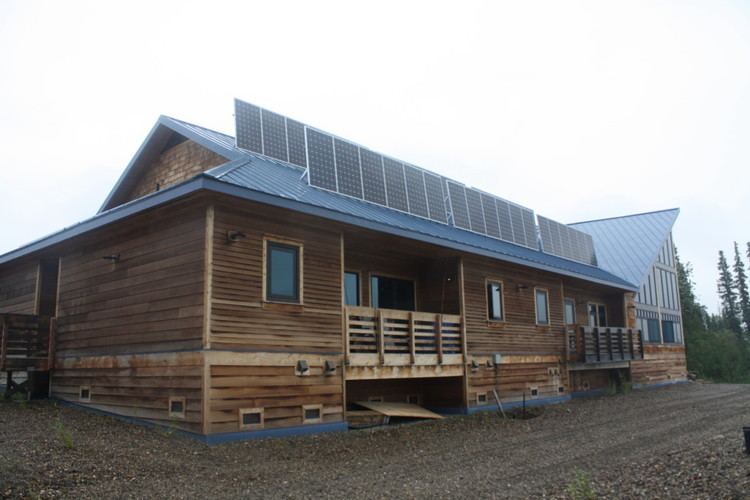Population 5,695 (2013) | Unemployment rate 18.8% (Apr 2015) | |
 | ||
Points of interest Finger Mountain, Eagle Summit, White Mountains, Yukon–Charley Rivers National, Toklat River | ||
Yukon-Koyukuk Census Area is a census area in the U.S. state of Alaska. As of the 2010 census, the population was 5,588. It has the largest area of any county or county-equivalent in the United States. It is part of the unorganized borough of Alaska and therefore has no borough seat. Its largest communities are the cities of Galena, in the west, and Fort Yukon, in the northeast.
Contents
Map of Yukon-Koyukuk, AK, USA
Geography
According to the U.S. Census Bureau, the census area has 147,805 square miles (382,810 km2), of which 145,505 square miles (376,860 km2) is land and 2,300 square miles (6,000 km2) (1.6%) is water. The area is roughly the same size as the U.S. state of Montana or the country of Germany. The area is bigger than 47 of the 50 states, with only California, Texas and Alaska itself being bigger than the county size. Its population density, at 0.0449 inhabitants per square mile (0.0173/km2), is the lowest in the United States.
National protected areas
Demographics
As of the census of 2000, there were 6,551 people, 2,309 households, and 1,480 families residing in the census area. The population density was 22.3 square miles (57.7km2) per person. It is the least densely populated county-equivalent of all 3,141 county-equivalents of the United States. There were 3,917 housing units at an average density of 0.027 per square mile (0.010/km2). The racial makeup of the census area was 24.27% White, 0.09% Black or African American, 70.89% Native American, 0.37% Asian, 0.05% Pacific Islander, 0.43% from other races, and 3.91% from two or more races. 1.19% of the population were Hispanic or Latino of any race. 12.95% reported speaking an Athabaskan language at home; of these 35.26% speak Gwich’in and 10.94% speak Koyukon.
There were 2,309 households out of which 38.90% had children under the age of 18 living with them, 36.90% were married couples living together, 16.90% had a female householder with no husband present, and 35.90% were non-families. 30.50% of all households were made up of individuals and 6.20% had someone living alone who was 65 years of age or older. The average household size was 2.81 and the average family size was 3.53.
In the census area the population was spread out with 35.00% under the age of 18, 8.70% from 18 to 24, 26.90% from 25 to 44, 22.10% from 45 to 64, and 7.30% who were 65 years of age or older. The median age was 31 years. For every 100 females there were 118.60 males. For every 100 females age 18 and over, there were 122.60 males.
Education
Galena City School District operates public schools serving Galena.
Nenana City School District operates public schools serving Nenana.
Yukon-Koyukuk School District and Yukon Flats School District operate public schools serving rural areas.
